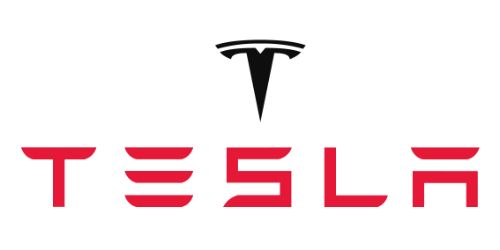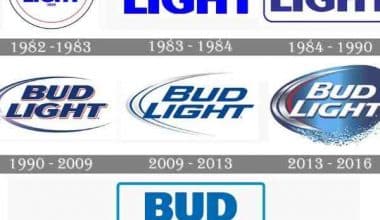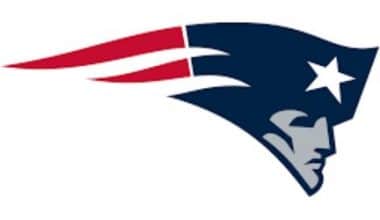Designing an automobile with ideal qualities like great handling, dependability, gas mileage, driver comfort, tilt and telescopic steering, and so on is no simple task. On the other hand, creating a logo that effectively represents a car company can be just as challenging. The American automaker, Tesla Motors, has a brand identity that’s just as alluring and convincing as its vehicles. The Tesla logo is a graphic work of art in the car industry. It is instantly recognizable, unique, and new.
Despite the fact that Tesla is just 18 years old and there are very few Tesla vehicles on the road, the company’s emblem is instantly recognizable all over the globe. A well-designed corporate logo can have that kind of impact. Below is a detailed look at the evolution of the Tesla logo and the meaning behind it.
What Exactly is the Tesla?
The story began in the early twentieth century when the first automobiles arrived on the streets. Nicola Tesla, a brilliant Serbian engineer, and electro-technician has made a significant discovery for his time and is currently examining a specific issue. Surprisingly, the concept of an electric engine predates that of an internal combustion engine (ICE). ICE was conceived much later, but it was successful. In turn, Nicola Tesla considered rebuilding a car to run on electricity, and he was successful in producing a prototype, but his suggestion was rejected.
Unfortunately, ICE vehicles are beginning to dominate the market and continue to place a heavy burden on nature’s shoulders. And they are so secure in their dominance that electric cars became a science fiction novel at the turn of the twentieth century. However, a certain number of people continued to buy them. Women preferred them because of their quiet engine, lack of waste, and ease of operation. Henry Ford personally purchased an electric vehicle for his wife. However, gasoline sales generate a lot of money, while electric automobiles are considered worthless and are only utilized on golf courses.
As time passes, the world changes, and ecology, which was completely neglected in the twentieth century, suddenly becomes an issue in the twenty-first. It is apparent that ICE is dangerous, and humanity requires other answers. As a result, two inventors, Martin Eberhard and Mark Tarpenning, founded Tesla Motors, a corporation dedicated to developing electric vehicles. Their company struggles until they encounter Elon Musk, a modern-day science icon. Following this historic meeting, the world finds electro automobiles named after Nicola Tesla.
Tesla Logo Meaning
The Tesla logo as it appears now, is more than meets the eye. It is a one-of-a-kind version of the letter “T,” with a white symbol on a black or red backdrop. The RO Studio developed the logo to fit within a shield, but the corporation finally dropped the shield and went with only the “T.”
According to Tesla CEO Elon Musk, what appears to be a simple stylized “T” refers to the brand’s goods. “The T is like a cross-section of an electric motor, much like the X is like a rocket trajectory,” he says. Musk appeared to be referring to the vertical line of the “T” as one of the poles that extend from the rotor of a motor and the horizontal line as a piece of the stator.
The Tesla logo was made on purpose to spread the idea of electric motors around the world. The main goal was to make electric motors more accessible to the general public by making electrical connections easier. Nikola Tesla, a brilliant inventor and scientist, invented an alternating-current motor in 1882.
Today, this mechanism, though makeshift, is an essential component of Tesla Roadsters. The Tesla logo indicates its electrical nature. Even though the logo looks like the first letter of the company name in capital letters, it is a part of the electric motor.
Read Also: MERCEDES BENZ: The Untold Story of the World’s No. 1 Car Brand
The most well-known parts of the Tesla logo are the stylized letter “T,” the shield (which stands for safety), and the AC motor. However, there is another interesting mystery behind this famous symbol.
The Tesla logo is shaped like a cat’s snout, and Elon Musk, the company’s CEO, validated this concept. The cat is a mysterious and wise animal with a keen intuition. Many people agree that the company’s success can be traced back to the owner’s extraordinary intuition. The cat’s nose can also predict its owner’s mood and well-being. Tesla leaves no stone unturned to guarantee that every component of the automobile and its manufacturing process benefits the driver’s safety, comfort, and enjoyment.
The design’s first version had a T-shaped symbol and a shield with three points. The letter T was in the center, with the brand name beneath it. A white shield in the background gave the emblem a confined shape. The shield has been removed from the final design, and the word mark has been placed below it since the Tesla logo has remained unchanged.
Tesla Logo Evolution
Nikola Tesla, a physicist and experimenter came up with an alternating current and saw how it could be used in engineering and business. Tesla was named after him. The brand has gained prominence as a result of its moniker.
An important and little-known fact about Tesla’s history is that Elon Musk was not present during the company’s inception. Martin Eberhard and Mark Tarpenning, two investors, established Tesla on July 1, 2003. Musk joined Tesla a few months later and invested $6.5 million. And that was the most significant investment at the time. It enabled him to take over as CEO, a current position. Under his direction, Tesla grew to become the most expensive automotive company in the world.
The Tesla logo was created to make the concept of electric motors as well known as possible. After all, Tesla’s main goal is to build an electric motor and make it easy for everyone to use by making electric transportation easier. Nikola Tesla introduced his one-of-a-kind invention, an alternating current motor, in 1882. This engine, though modernized, is still used in Tesla Roadsters today.
Since 2005, Tesla has made five models of electric cars: the Roadster, Model S, Model X, Model 3, and Model Y. Tesla is also expanding its network of electric charging stations known as “Superchargers.”
2004 – Today
The Tesla logo was designed in 2004 by RO Studio, an American design firm that also created the logo for Elon Musk’s second company, Space X.
The Tesla logo’s primary function is to indicate its electrical origin. The logo is formally the capital letter of the brand name, but it is also a component of the electric motor. The first version of the Tesla badge was drawn in the shape of a shield, resulting in an unusual shape of the capital “T” inscribed on it.
As mentioned earlier, the Tesla logo is shaped like a cat’s nose. This notion was even confirmed by the company’s founder, Elon Musk. The cat is an animal that represents a deep and intuitive beginning. Few people would argue that the company’s success isn’t due to the owner’s amazing ability to read people. Another feature of the cat’s nose is detecting its owner’s health and mood. We all know that Tesla goes through a lot of trouble to ensure that every part of driving is fun and safe for the driver.
Font for the Tesla Logo
The font is one of the most important aspects of the Tesla logo. The designer replaced the standard font with a customized one. Because of its uniqueness, the logo, created by an American designer named Dies, is as popular as the brand and its products. Aside from some techno and fancy elements, the logo has a sci-fi feel.
In terms of font, the wordmark uses a sans-serif typeface with a modern, geometric twist. Each character has a strong and confident appearance, neat lines, perfect proportions, and bold strokes. The font design is based on how the company works, focusing on technology and the future. This also denotes a specific era, such as Spiderman, space movies, etc.
Color of The Tesla Logo
The Tesla badge is predominantly black and silver. These colors are associated with class, harmony, elegance, creativity, and innovation. Because these colors are simple to change and experiment with, adding or subtracting one shade is simple. Tesla chose red to represent its love and dedication to electric vehicles.
Elements of the Tesla Logo Design
The Tesla logo is a unique, futuristic-looking design of the letter “T.” It’s a white logo on a black background.
For a long time, people speculated that the Tesla logo was more than just a fancy “T.” The popular belief was that the logo was designed to resemble a cross-section of an electric motor invented by Nikola Tesla, after whom Tesla was named. This was a theory that Tesla took a long time to address, but one that Elon Musk himself confirmed in a Tweet.
After a man named Peter James Dean tweeted at Musk, asking,
“Could you please shed some light on what the Tesla logo represents?” “There are so many theories out there, but no one knows!” responded Elon Musk, “Similar to SpaceX, the T is like a cross-section of an electric motor, just as the X is like a rocket trajectory.”
This Tweet both confirmed and illuminated the long-held theory about the Tesla logo. The company’s logo, like its name, pays homage to Nikola Tesla, a man who sought the key to unlimited energy long before the energy crisis was on anyone’s radar.
Read Also: GOLDEN STATE WARRIORS LOGO: Meaning, Tickets, Rumors, and History
The Tesla logo has a few other important design elements besides this tribute to Nikola Tesla. For one thing, the logo is designed to appear futuristic—an important message is conveyed that Tesla’s focus on the future is an important part of the company’s mission and overall goals.
The Tesla logo is also meant to appear luxurious and powerful, which the black and white color scheme contributes to. Remember that before Tesla could sell cars to the mass market, a large part of its business plan was based on selling luxury vehicles to people who could afford any car on the market. Given how important this market segment is to Tesla’s business goals, it was important for them to develop a logo that showed luxury and high-end quality.
By making their logo edgy, futuristic, scientifically themed, and luxurious, Tesla was able to show off everything that makes their company unique. This is the ultimate goal of most logos.
The Tesla Logo’s Popularity
There is no doubt that the Tesla logo served its purpose. Although Tesla vehicles account for only a small percentage of all vehicles on the road today, the Tesla logo is instantly recognizable. Anyone who drives a Tesla knows that the logo on their car will be noticed and recognized as a symbol of status and prestige. Without Tesla’s now-famous logo, the prestige of owning a Tesla would undoubtedly suffer.
There’s also a chance that Tesla took their time revealing the true meaning of their logo design on purpose. Tesla operates in a world of wonder and mystery, with people looking to the company as a symbol of the future. Allowing people to speculate on the meaning of their logo would only add to the sense of wonder and mystery and would help spark people’s interest in the company.
Overall, the Tesla logo is both an easy-to-recognize company symbol and a symbol for the future of energy and transportation. Whether or not Tesla eventually achieves these goals remains to be seen, but for the time being, its logo represents everything Tesla hopes to achieve. It’s the very powerful logo has helped Tesla get to where it is now in terms of popularity and success.
Timeline of Tesla Models
2008 Tesla Roadster (First Generation)
Tesla’s first model, the Roadster, was produced from 2008 to 2012. The Roadster accelerates from 0 to 100 km/h in less than 4 seconds, can travel approximately 350 kilometers on a single charge, and has a top speed of 200 km/h.
2012 Tesla Model S
The first Tesla Model S cars for US buyers were delivered on June 22, 2012, at a special event at the Tesla facility in California. Initially, the car was given the codename “Whitestar.”
Model S is also one of the world’s fastest automobiles, not just electric vehicles but automobiles in general. It has a range of about 650 kilometers and can accelerate from 0 to 100 kilometers per hour in 2.1 seconds.
2015 Tesla Model X
The Tesla Model X is an SUV with four wheels.
In February 2012, the prototype was shown off, and in September 2015, the first set was sent to clients in California.
The car shares the same platform as the Tesla Model S. The Model X is notable for its falcon doors, also known as “gull-wing doors,” which allow drivers to stand up in the vehicle.
2017 Tesla Model 3
Model 3 production began in 2017 and was available on the European market in 2019. The quoted range is affected by temperature, driving style, and charging pattern.
One of many advancements is the car’s central operational display, which replaces traditional buttons and displays.
2017 Tesla Semi
Tesla Semi is an all-electric, battery-powered Class 8 semi-truck developed by Tesla. It was announced in November 2017, with production set to begin in 2023.
2019 Tesla Model Y
The Tesla Model Y is an upcoming crossover electric vehicle (CUV). It was unveiled in March 2019, with delivery to the US market set for mid-March 2020 and delivery to the European and Asian markets set for 2021.
It is Tesla’s second mass-market model and shares many components with the Model 3. The Model Y has a third row of seats that seats seven people as an option.
2022 Tesla Cybertruck
Cybertruck, an all-electric, battery-powered, light-duty truck, was introduced in 2019. There are three models available, with EPA range estimates ranging from 400-800 kilometers (250-500 miles) and 0-100 km/h (0-62 mph) times ranging from 2.9 to 6.5 seconds. Production will begin in 2022.
Tesla Facts in a Nutshell
Now and then, a company emerges that is bold and imaginative enough to disrupt an industry completely. When Ford first produced the Model T (one of the first automobiles), it forever changed the transportation industry.
Tesla is a company that is now trying to change the transportation industry in a big way by making electric, self-driving cars the norm for the future.
Tesla has had many moments of glory and failure in his short life.
- From FY 2008 to FY 2020, Tesla is expected to make around $31.5 billion in sales worldwide.
- Tesla’s global quarterly car deliveries are expected to total 241k (1st quarter 2016 to 3rd quarter 2021).
- The quarterly operating margin for Tesla is expected to be around 14.6 percent (1st quarter 2019 to 3rd quarter 2021).
- In 2021, Tesla will have delivered 936,000 vehicles, an 87% increase that places the company at the pinnacle of the global EV industry, with a 14% market share.
A Brief History of the Fortune 500 Corporation: Currently ranked number 65
Despite the uncertainty and periodic factory shutdowns due to the COVID-19 pandemic in China, the company delivered 310,048 vehicles and posted record quarterly earnings in the first quarter of 2022. Tesla’s meteoric rise up the rankings continued, with the company climbing 35 spots from last year to rank 65.
In July 2003, engineers Martin Eberhard and Marc Tarpenning started Tesla Motors to honor Nikola Tesla, an inventor, and electrical engineer.
Elon Musk joined the board of directors of the company in 2004. Musk’s goal for Tesla was to help solve the world’s energy crisis by making high-quality cars for many people.
The company’s goal is to create a mass-market vehicle that does not rely on fossil fuels. In 2009, Tesla received a $465 million loan from the Department of Energy.
In 2017, Tesla Motors Inc. changed its name to Tesla Inc. CEO Elon Musk wanted to change the Silicon Valley company from making electric cars to making various energy goods.
Tesla is an American company that makes electric cars and also makes solutions for generating and storing clean energy that can be scaled up indefinitely.
In 2019, the company was the world’s best-selling plug-in and battery electric passenger vehicle manufacturer. In the first half of 2020, their vehicles accounted for 81% of all battery-electric vehicles sold in the United States.
How Can Other Companies Use Tesla’s Logo as Inspiration for Their Own?
Those who want to design a logo like Tesla’s must understand that their brand must be simple, representative, and ageless.
But how can they make their brand timeless? Let’s start with the color. Tesla decided to use exclusively black and silver. These hues signify elegance, harmony, or traditional integrity ideals. They are connected with luxury on ethical grounds.
Furthermore, such colors are simply adaptable, and it is simple to add another hue that represents the brand. In Tesla’s example, red was picked when blue would have been more appropriate. The former was chosen due to the brand’s passion and affection for electric vehicles and technological breakthroughs.
Can the Idea of Employing a Shield Improve the Logo?
A shield-based logo or a coat of arms can add a little bit more to a logo. Though Tesla eventually removed such aspects, brands like as Peugeot decided to bring them back into fashion and use. A logo like this gives the brand a sense of presence.
Brands may consider including elements that are simple to comprehend and can symbolize the brand’s values. However, they must keep in mind that the logo must be kept basic to be used everywhere.
Finally, the logo should have a significant meaning, i.e. it should be meaningful. Why? Because it embodies the brand, its values, and the organization as a whole. Tesla’s logo has not one but two meanings!
Tesla’s initial logo was both antique and banal, using the letter T. However, the second one is well-made because it is built on an electric motor. This is appropriate for a brand that focuses on electric vehicles.
Conclusion
Now that the Tesla logo has been thoroughly explained and comprehended, the corporation will celebrate its 20th anniversary next year. Is there going to be a new logo? It’s possible.
Those who believe they need to change and revamp their logo to be more elegant and simple (like Tesla’s logo) can do so and speak with a reputable logo design studio to ensure they are on the right track.
Related Articles
- PERSONAL BRAND: Effective Tips For Personal Branding with Examples
- AMERICAN HOME SHIELD WARRANTY: Overview, Plans, Pricing, and Reviews
- Brand Strategy: How to Develop an Effective Brand Strategy with Examples
- TESLA SOLAR: Panels, Powerwall, & Solar Roof 2023 (Updated)
- What Is Shares Outstanding: Definition & Understanding Its Calculation






